A perfectly flaky pie crust made from only butter, this easy pie crust recipe will be the only one you'll ever need!
Jump to:
There is nothing better than a perfectly flaky pie crust. The perfect pie crust should be golden in color, short and flaky in texture, and almost fall apart when cut.
You want it to melt in your mouth with a buttery flavor while retaining structure throughout. That means no soggy bottoms!
This recipe is going to take you through all the tips and tricks to improve your pie crust and create the perfect pie base for any recipe.

What is the secret to a flaky pie crust?
A lot of people have different techniques when making pie crusts, whether that be adding ingredients like shortening, vinegar, or even vodka.
After experimenting with all of these ingredients, I've found that none of them make that big of a difference. Instead, the secret to the best pie crust is in the technique.
The way you handle your pie dough will make the biggest difference to your crust.
What type of fat do you use to make a flaky crust?
A mix of butter and shortening
The most common pie crust recipe will use a mixture of vegetable shortening and butter.
Vegetable shortening has a tendency to stay firmer longer than butter and makes the pie dough a lot easier to handle. This is especially true when making patterns and lattices with your pie crust.
As a result, a lot of people will recommend making pie crusts with shortening if you are a beginner. This is because your dough won't start melting in your hands as you are assembling your pie.
The resulting texture is a flaky pie crust with more defined layers.
Why use all butter?
While this may be a lot of people's default, my personal favorite is an all-butter pie crust. Butter is by far superior in flavor when making anything. An all-butter pie crust will always be the best.
Butter can be more difficult to work with as it has a lower melting point than vegetable shortening. This means that it'll melt a lot faster. But as long as you chill your dough there won't be any trouble working with it!
The resulting texture is a pie crust with a lighter texture than one made with shortening. The layers are thinner, with a light, melt-in-your-mouth mouthfeel in comparison to a shortening pie crust.
While a lot of this comes down to personal preference, I love that almost fall-apart texture that an all-butter crust gives. That's why it's my personal choice!
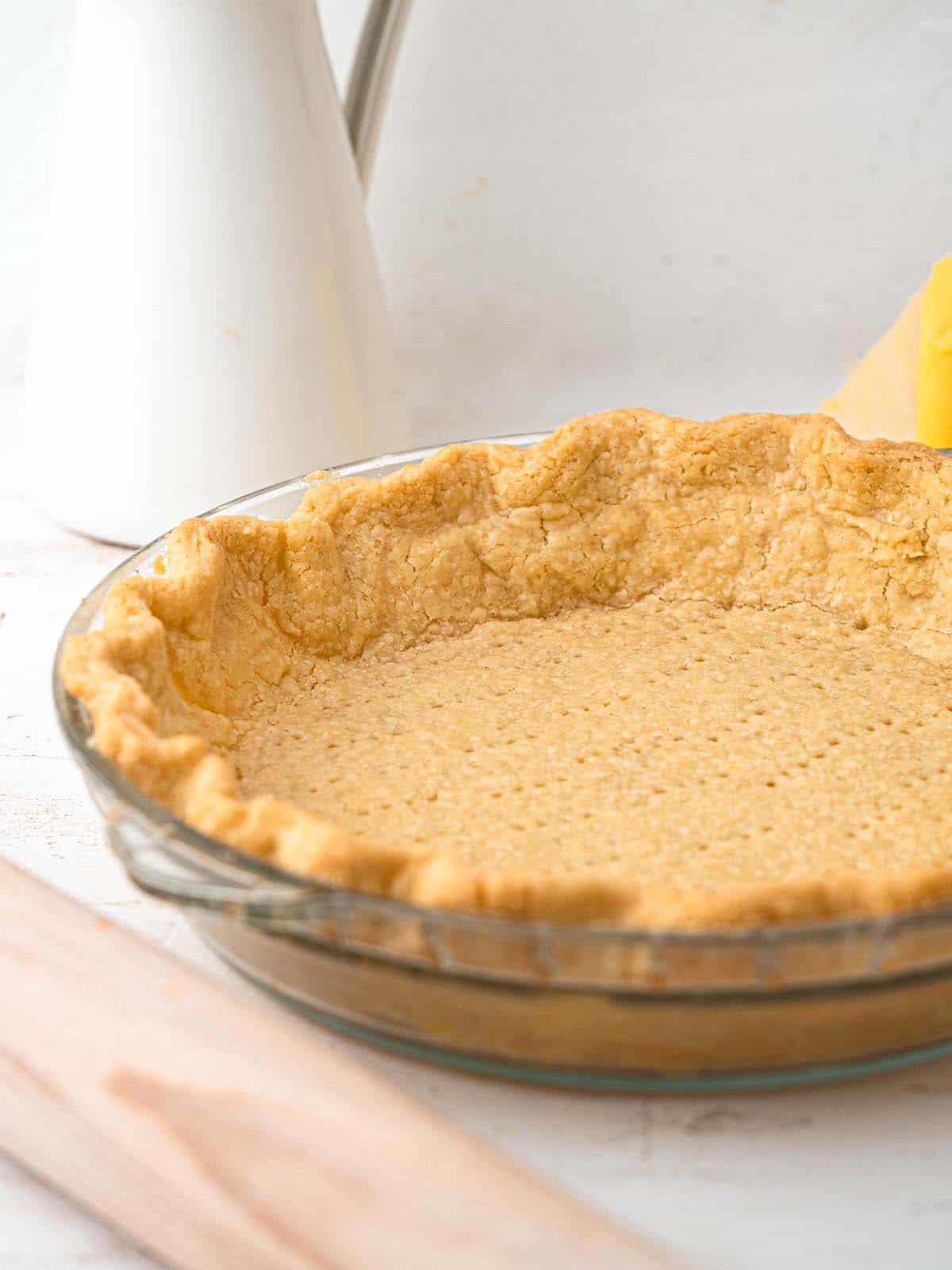
How to use this pie crust recipe
This pie crust is extremely versatile and can be used to use any kind of pie dish you wish. Whether that be a pumpkin pie, pecan pie, blueberry pie, or apple pie the options are endless.
Making a single pie crust
If you are making a pie like a pumpkin, pecan, or banoffee you only need to make the bottom of the pie crust. There will be excess dough, but I think it's always nice to have a little extra dough to play with. It also makes lining the tin so much easier.
Once you've made the pie crust roll out ¾ of the dough into a round slightly larger than your pie pan. Then use this to line your pie dish. Use your forefingers and thumbs to press the edges of the dough into a crimped pattern, or a fork for an easy crimped edge.
The extra ¼ of your dough can be frozen to be used another time, used to fill in cracks, or rolled out to make little cookies on the side. I recommend sprinkling a little turbinado or raw sugar over your pie crust cookies, if making, for a sweet touch!
If you are making a single pie crust I highly recommend blind baking the dough for a crisp crust. Dock the base, line the inside of your pie dough with pie weights or baking beans, and bake.
Making a double crust
Divide the pie dough in half and roll one half out to line your pie dish.
Roll the other half of the dough out between two sheets of baking paper and place that on a baking tray.
Chill both the lined pie dish and rolled-out dough in the refrigerator for 1-2 hours, or overnight. Then you can assemble your pie!
Cut the rolled-out dough into strips for a lattice crust or a large round to cover the top of your pie. Brush with egg wash and bake!
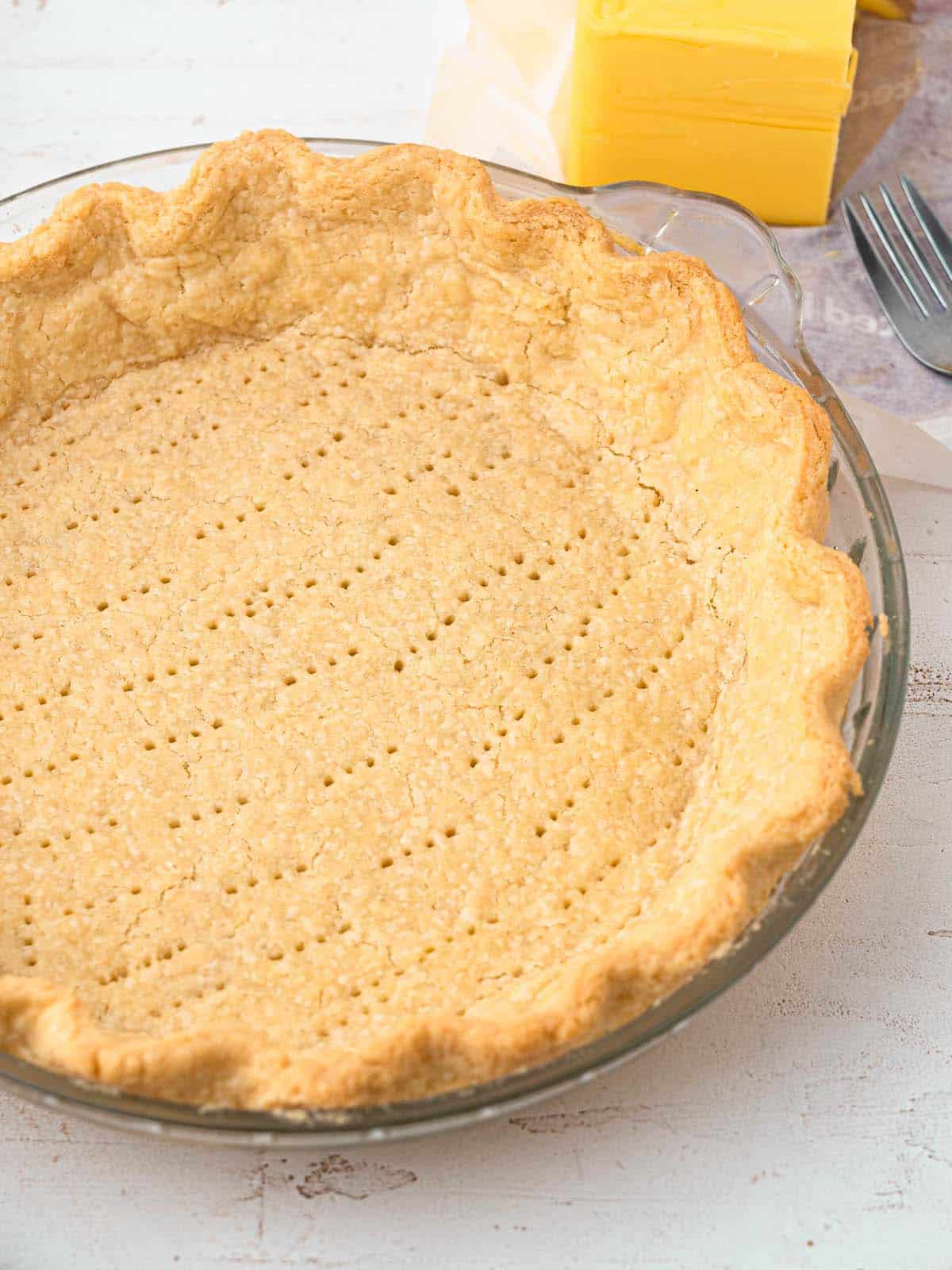
Ingredients in a pie crust
All-purpose flour
Regular flour is great for making pie crusts. If you want a super tender pie crust you can use pastry flour or cake flour. These have less gluten than regular flour.
Gluten is the enemy when making a tender pie crust. The more gluten there is the tougher and more rubbery your crust will become.
Granulated sugar
I like to add a little sugar to my pie crusts to balance out the flavor, but this is completely optional and won't affect the texture. If you want a sweeter pie crust feel free to add more. If you are making a savory pie like a quiche or meat pie you can omit it too.
Salt
Salt will balance out the flavor of the pie crust, while also helping to strengthen the structure.
Cold unsalted butter
Make sure you use unsalted butter otherwise your pie crust will be way too salty.
When making the dough make sure your butter is cut into 2-inch cubes, this ensures that the butter is broken up through the dough consistently.
Also make sure that the butter is chilled, or even frozen. The colder the butter the better. This ensures a super flaky pie crust!
Ice water
You want to use iced or very cold water to make your dough. This keeps the temperature of the dough down, preventing the butter from melting. All essential steps for a flakier pie crust.
How to line a pie dish
I never struggle to line a pie or tart tin because of these tips. Not only will this make your life easier and speed up the process so that your pie crust is the perfect texture.
Line the pie dish before chilling
Most recipes will tell you to chill your dough before lining your pie dish. While you can do this, chilling your dough after you've lined your pie dish is a time saver. It also removes the need to roll out a rock-solid dough disk.
Roll the dough out between two sheets of parchment paper
One of the things that people struggle with the most when lining a pie plate is rolling it out. Even if you use a lightly floured surface, the dough will still stick to your rolling pin and your work surface.
Rolling your dough between two sheets of baking paper makes your life SO EASY. The dough won't stick, it'll be at a consistent thickness and you can transfer it to your pie dish without it tearing.
Once the dough has been rolled out peel off the baking paper from one side. Flip the dough and line your pie dish with the baking paper side up. This keeps your dough from falling apart as your move it to your dish.
Once safely in your dish remove the baking paper and line as normal!
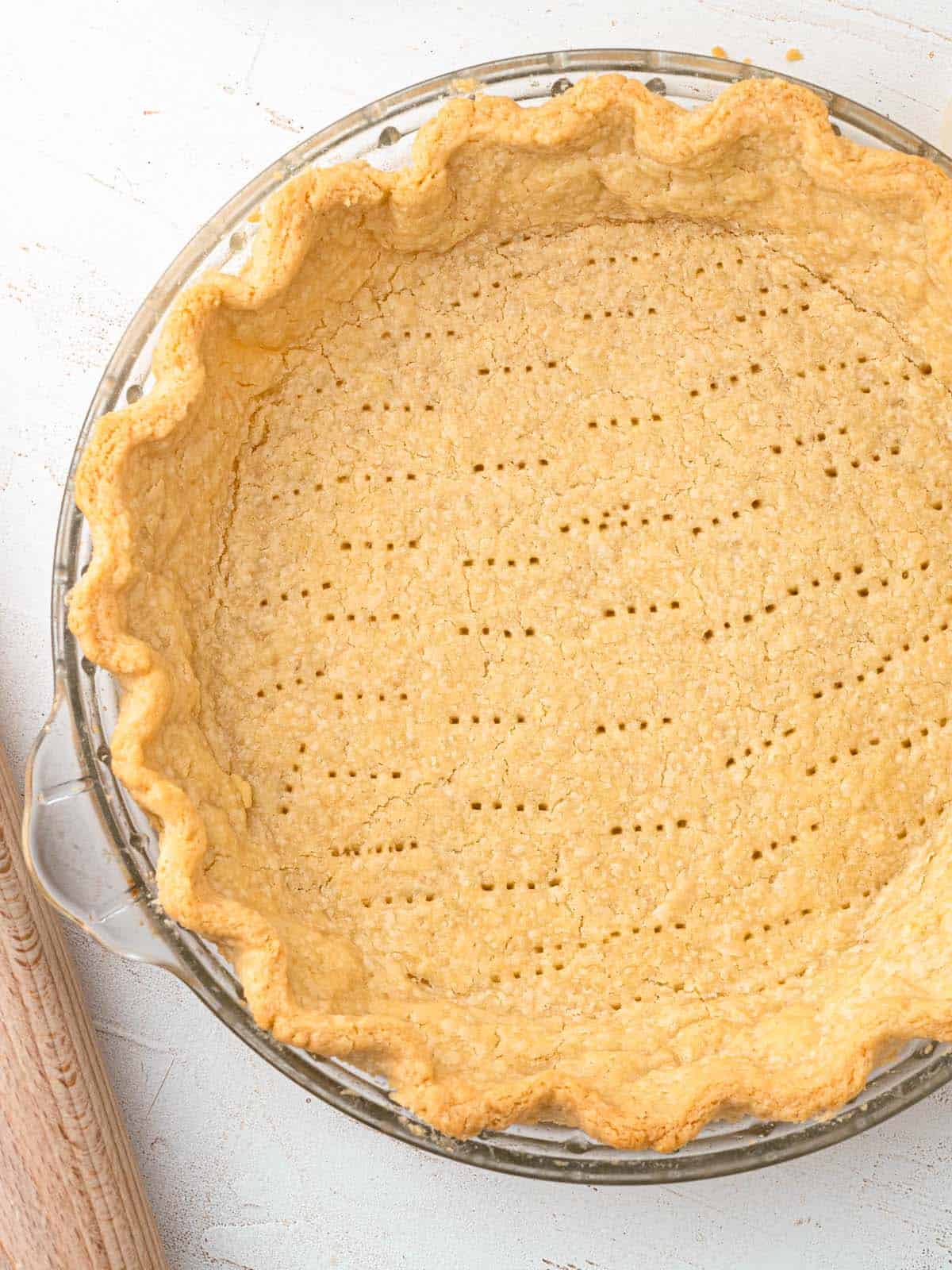
Frequently Asked Questions
Can I make pie crust ahead of time?
Yes, you can! You can make the pie crust days in advance and bake it when you are ready to assemble your pie.
If you are baking the pie crust before filling you can even pre-bake it the day before.
Can I freeze this pie crust?
Yes! This pie crust is perfect for freezing.
You can freeze the unrolled dough, rolled-out sheets of dough, and the unbaked or baked pie crust. So many options and all of them work. When you are ready to use it just allow it to defrost in the fridge.
How do I avoid a soggy bottom?
The best way to avoid a soggy pie crust is to blind-bake the pie crust. This allows the bottom of the pie crust to have contact with the oven before it is filled with anything.
The cooking of the crust will be a lot more consistent while preventing it from becoming too rubbery.
Why isn't my pie crust flaky?
There are a couple of reasons why your pie crust isn't flaky:
- The dough was too warm/the butter melted when working with the dough
- The dough was overworked
- The dough is underbaked
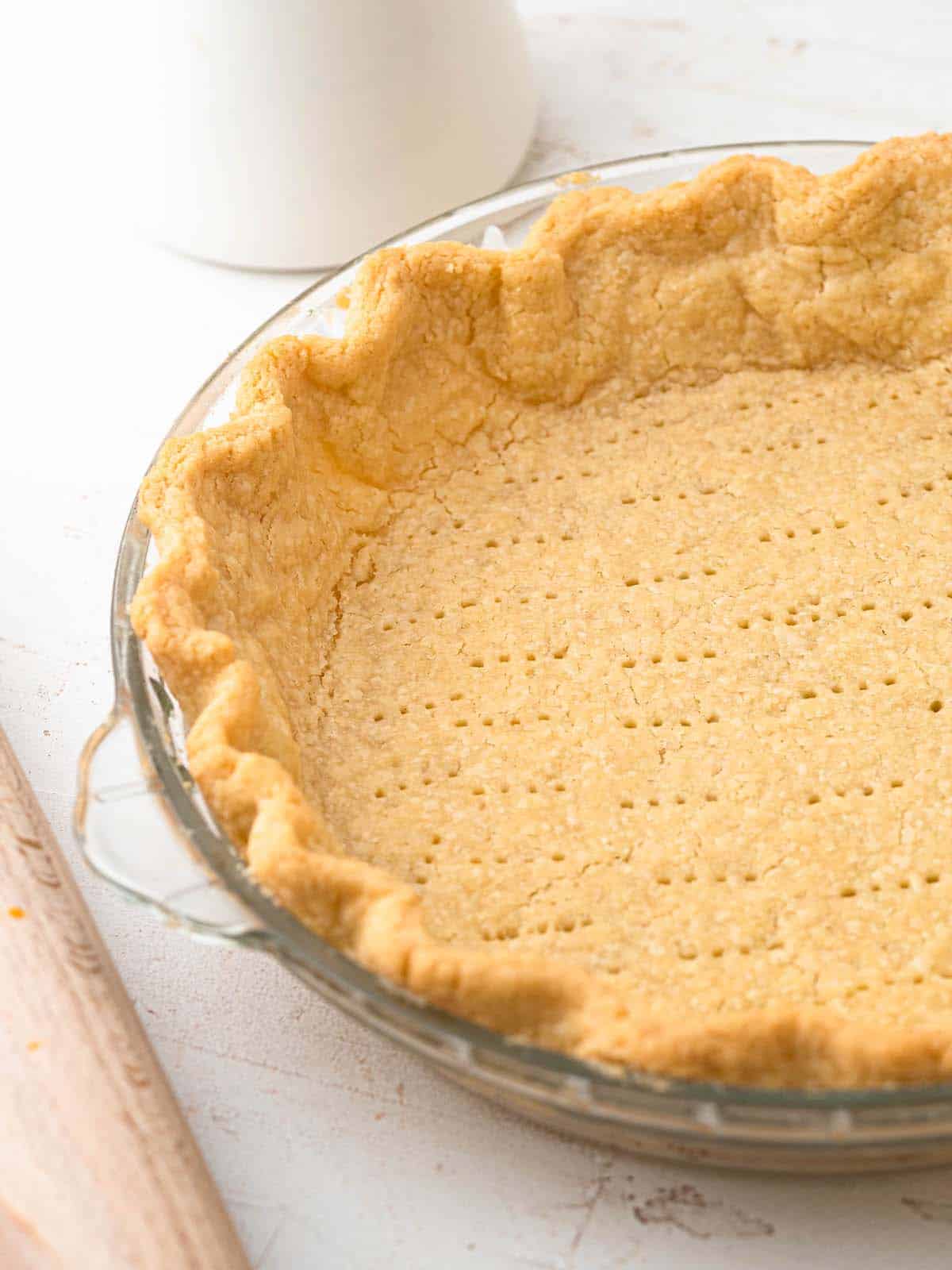
Let's Get Baking
Trust me, this will become your go-to pie crust recipe. Give it a go and make sure to follow all the tips I've described above for the best results!
If you liked this recipe make sure to leave me a comment and rating down below, I would love to know how you went.
Also, don't forget to tag me on Instagram @catherine.desserts and hashtag #cattycakes so I can see and share your desserts. Follow me on Facebook, Pinterest, Youtube, and TikTok for more of my baking creations and updates! Until next time... happy caking!
PrintFlaky Pie Crust
A perfectly flaky pie crust made from only butter, this easy pie crust recipe will be the only one you'll ever need!
- Prep Time: 15 minutes
- Cook Time: 30 minutes
- Total Time: 45 minutes
- Yield: 1 pie shell 1x
- Category: Pie
- Method: Easy
- Cuisine: American
Ingredients
- 300g All purpose flour (2 ½ cups)
- 1 tbsp Granulated sugar
- Pinch of salt
- 240g Unsalted butter (1 cup), chilled and cubed
- 60ml Ice water (¼ cup), approx
Instructions
- Combine the flour, sugar, and salt in a large bowl or food processor
- Add the butter and use a pastry cutter or your fingers to work the butter into the flour. Or pulse it in the food processor, until it reaches a sand-like consistency with pea-sized chunks of butter throughout.
- Add the cold water and mix until a rough dough forms
Double-Crust Pie
- Divide the dough in half
- Roll half the dough into a large circle slightly larger than the size of your pie dish
- Line your pie dish, dock the base with a fork and trim any excess
- Place the other half of the dough between two sheets of baking paper and roll it out into a round, 2mm in thickness
- Put it on a baking tray
- Place the pie dish and baking tray in the fridge to chill for 1-2 hours, or overnight
- Remove from the fridge and assemble your pie
Single-Crust Pie
- Remove ¼ of the dough, and roll out ¾ of dough between two sheets of baking paper to a large circle slightly larger than your pie dish
- Remove the baking paper from either side and line your pie dish, trimming any excess
- (You can use the excess dough to fix any cracks that have formed, roll it into cookies on the side, or freeze it for next time)
- Dock the base with a fork and place it in the fridge to chill for 1-2 hours, or overnight
- Preheat the oven to 200C/390F
- Line the inside of the pie crust with a scrunched-up piece of baking paper and fill it with baking beans or rice
- Blind bake the pie crust for 15 minutes
- Remove the baking beans or rice, reduce the oven temperature to 180C/355F and bake for another 12-15 minutes, or until lightly golden in color
- Fill with your desired filling!


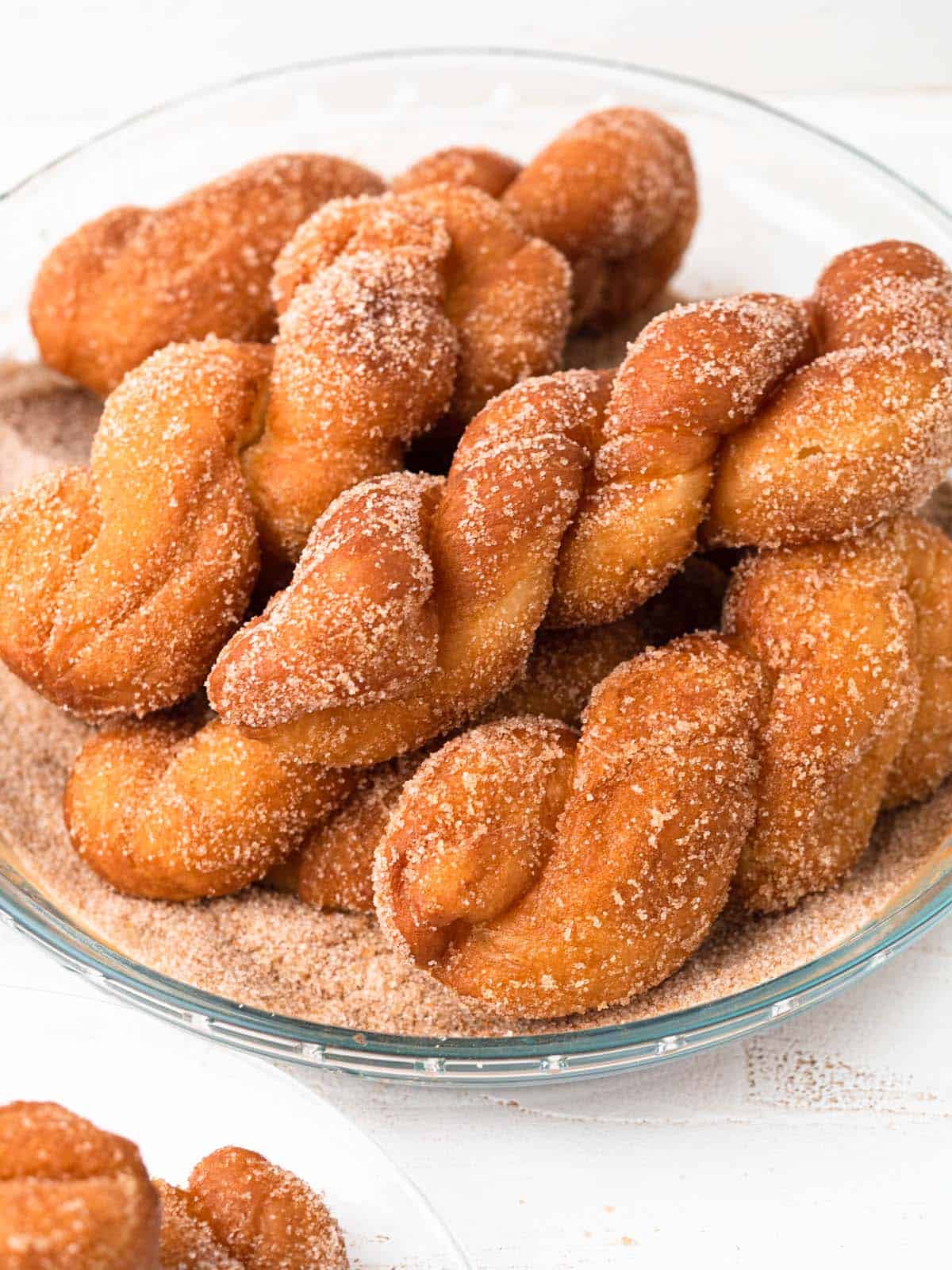
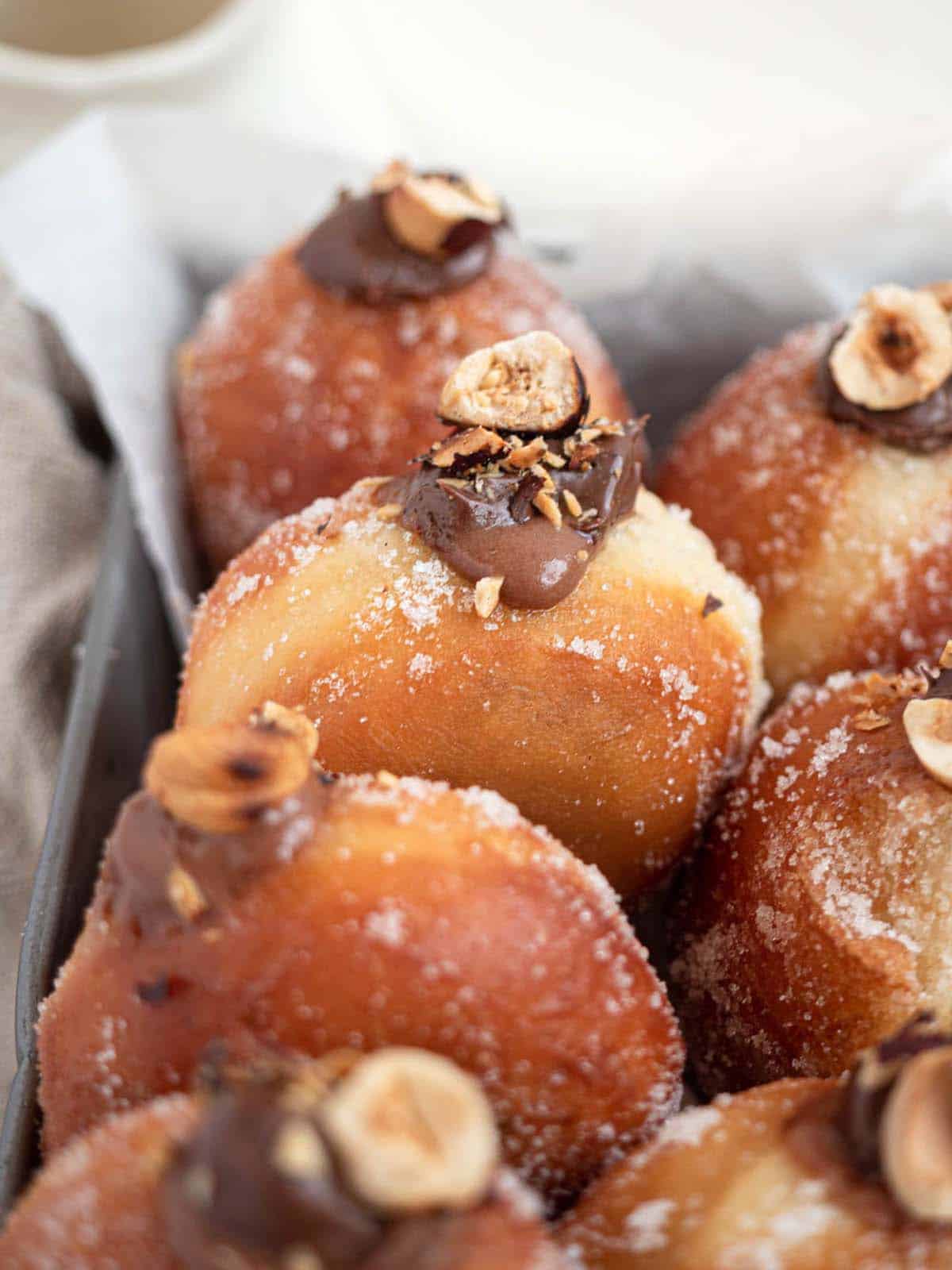
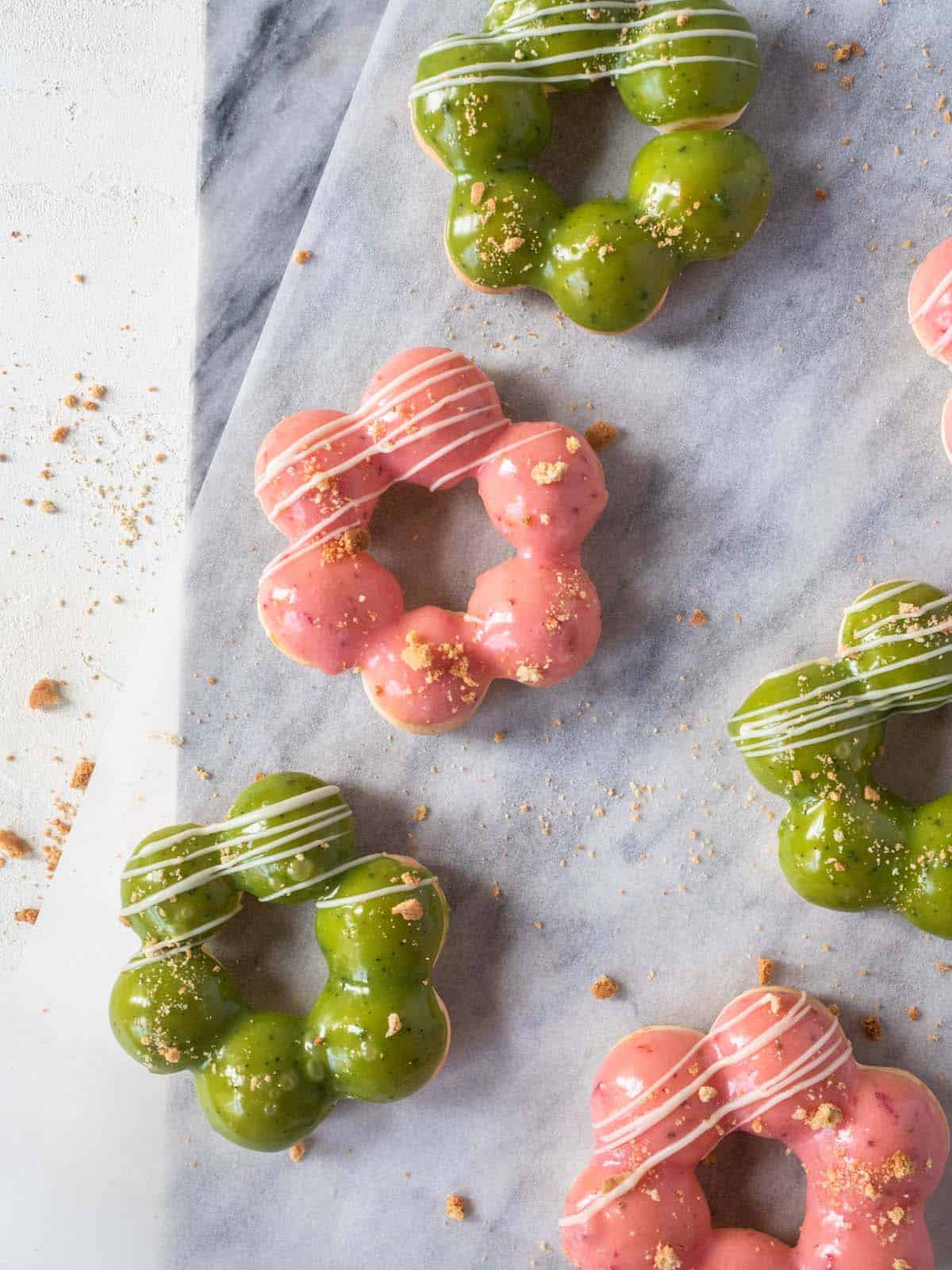

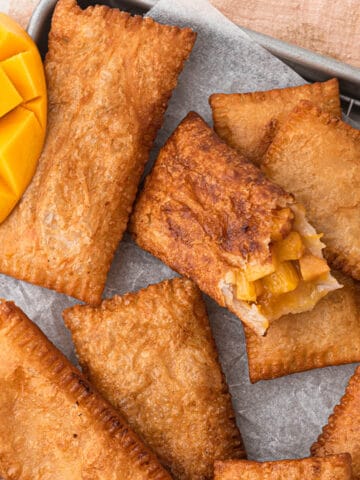
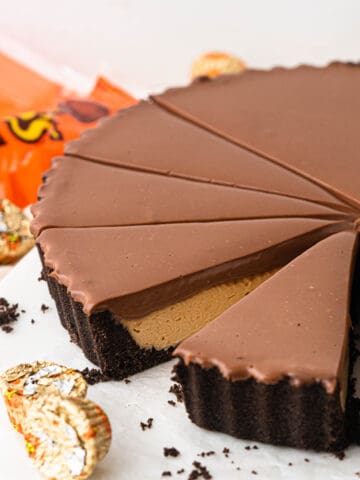
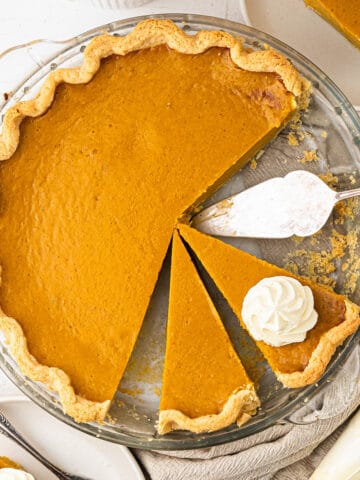
Comments
No Comments